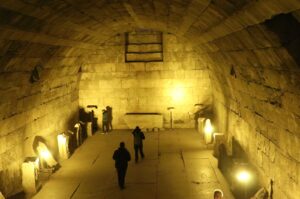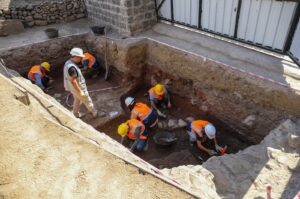The Ottoman-era tradition of mahya, an illumination art dating back to the 16th century, returned to Istanbul on Tuesday as lights were strung between the minarets of the city’s historic mosques for Ramadan.
Mahya displays, featuring messages or patterns formed by lights in the shape of letters and symbols, have been installed at major mosques, including the Hagia Sophia Grand Mosque, the Eminönü New Mosque and the Süleymaniye Mosque.
The Sultanahmet Mosque, which has featured mahya displays since 1617, will not have one this year due to ongoing restoration work.
Istanbul Mufti professor Safi Arpaguş said the tradition, an integral part of the city’s skyline, is maintained by only a few skilled craftsmen. This year, the displays were installed in cooperation with the General Directorate of Foundations.
Mahyas typically convey short spiritual and social messages, Arpaguş said. While they have carried various meanings throughout history, Ramadan displays usually emphasize themes such as brotherhood, Eid celebrations, family, worship, fasting, prayer and charity.
This year’s messages highlight the holiness of Ramadan, the Quran and fasting, with a particular focus on goodness. Beyond their messages, mahyas also add visual beauty to Ramadan nights. The minarets light up at iftar, the evening meal that breaks the fast and turns off at imsak, and the pre-dawn meal marks the start and end of the fasting period.
Traditionally, mahyas were crafted using oil lamps carefully arranged on ropes to spell out words. Today, they are illuminated with electric bulbs or LED lights, making them brighter and more colorful. The messages, typically in Turkish, appear as glowing text or designs floating in the air, adding a spiritual and festive atmosphere to Ramadan nights in Istanbul.




















































Be First to Comment